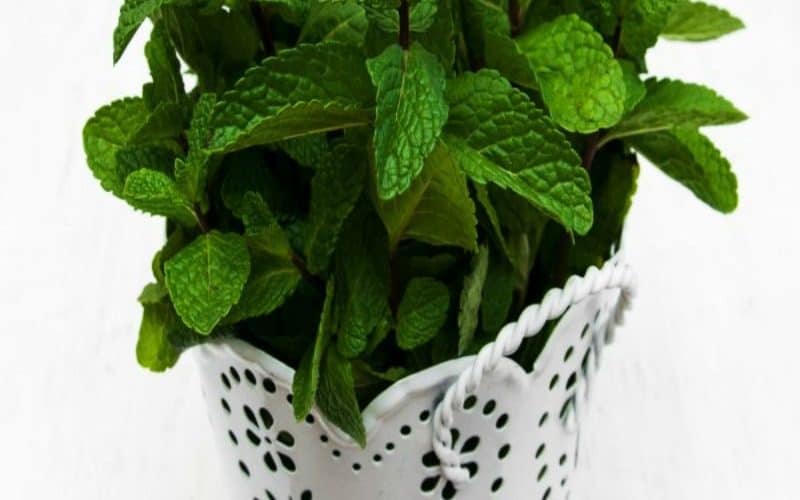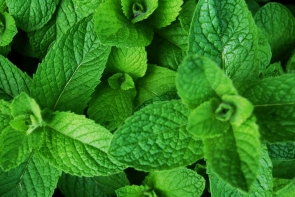Mint
<>
Mint cannot be topped for its always fresh, bright taste. It is easy and fun to grow indoors. Follow the simple steps below to get your own indoor mint plant started.
Contents
- 1 To Do/Supply List for Getting Started
- 2 Choose the Variety of Mint to Grow
- 3 These sites have information on each of the other mint varieties available
- 4 Choose a Sunny Window Sill
- 5 Choose the Pot/Container
- 6 Choose a Good Potting Soil
- 7 Buy a Small Mint Plant, or Root Some Cuttings in Water
- 8 Caring For the Indoor Potted Mint Plant
To Do/Supply List for Getting Started
Choose the Mint Variety to Grow
Locate a Sunny Window Sill
Choose the Pot/Container
Choose a Good Potting Soil
Grow Light or Fluorescent Light (optional)
Buy a Small Mint Plant or Root Some Cuttings in Water
Pot Your Plant and Enjoy!
Choose the Variety of Mint to Grow
There are numerous varieties of mint, but the most widely used and known are peppermint (Mentha piperita) and spearmint (Mentha spicata). Spearmint has a milder flavor than peppermint.
Many people say the different mint varieties are interchangeable, but if you want to grow mint indoors for culinary use, choose spearmint. It is the mint most often used to flavor meats and savory foods. Lamb and other meat dishes traditionally use spearmint, as do recipes for pesto, flavored vinegars, sauces and salads. Peppermint is most often used in sweet foods.
These sites have information on each of the other mint varieties available
Mountain Valley Growers: Mint
Fragrant Fields: Mint Plants
Choose a Sunny Window Sill
Northern facing windows are not good for indoor plants. Choose a window with eastern, western or southern exposure. Your plant will need four to eight hours of sunlight per day. Moving your mint pot outdoors during the growing season is an alternative to the southern window that may be too hot during the summer.
Also, grow lights or fluorescent lights can be used to supplement inadequate window light.
Choose the Pot/Container
A pot that is more wide than deep is best for mint. This will allow the mint plant to develop a good healthy root system doing what it does naturally outdoors. Make sure the pot has drainage holes. Herbs require good drainage for healthy growth.
Sit the pot on a saucer that is filled with pebbles to keep the roots from sitting in water; or always empty the saucer a few minutes after watering if you are not using pebbles.
Choose a Good Potting Soil
The potting soil brand leaders normally cost more, but deliver on what is required by the plant: moisture when needed, good drainage, and nutrients. Your plant will get all the nutrients it needs for the first few months directly from that soil mix.
Buy a Small Mint Plant, or Root Some Cuttings in Water
Purchase a starter plant at your local nursery or even from the produce section of your grocery store. Mint plants are readily available from numerous online nursery businesses also.
Alternatively, you can root some cuttings from your garden in water. Or ask a friend for some cuttings to start. Choose five or six stems that look healthy, and cut off the top five or six inches. Use good, sharp scissors to cut them. Put about three inches of water in a glass, then remove the leaves from the bottom three inches of the stems. Place the cuttings in the glass, and put it on a window sill. Replenish or change the water as needed until the stems have developed several roots.
Pot Your Plant and Enjoy!
Caring For the Indoor Potted Mint Plant
Light is the most important thing needed for your plant. Water only when the top inch of soil is dry. Mist the plant in between waterings if the humidity level is low. Never allow the pot bottom to be immersed in standing water.
After several months, fertilizer may be needed. Mix any fertilizer at half the rate shown in the directions for use on your potted plant to avoid damaging the plant. Fertilizing too often can cause the plant to grow considerably larger, but that same larger plant will often have less intense flavor. Allow the plant a rest from fertilizer during the winter months.
Related Youtube Video:
Growing Herbs : How to Grow an Herb Garden Indoors
<>




